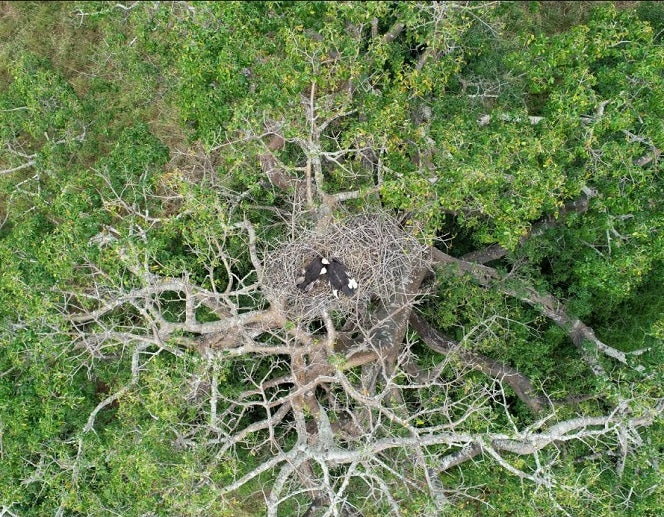
Boise State University MS Raptor Biology student Rebecca Bishop defended her thesis, “A Novel Approach to the Nest Site Characterization of Two Species of Critically Endangered Vulture in Gorongosa National Park, Mozambique” on the morning of June 6, 2023. Bishop’s main advisor is Dr. Jay Carlisle (Biological Sciences & Intermountain Bird Observatory), and her committee includes Dr. Todd Katzner (Boise State University Raptor Research Center affiliate faculty, USGS), Dr. Jen Cruz (Raptor Research Center, Biological Sciences), and Dr. Ara Monadjem (University of Eswatini).
ABSTRACT
Vulture populations in Africa face extinction as the result of numerous human-generated threats. Existing geographical and ecological knowledge gaps urgently need to be filled to support targeted conservation action across the vast continent, and ideally halt further decline. Our study focuses on two Critically Endangered African vulture species – the White-backed Vulture Gyps africanus and the especially rare and poorly understood White-headed Vulture Trigonoceps occipitalis – in one of the most understudied countries, Mozambique, and from the lens of a protected area, Gorongosa National Park. Formal documentation of breeding densities, basic nest site characteristics, and timing is limited for both species within Mozambique. To explore the breeding ecology of these species in Mozambique, we employed a novel survey method using an Unoccupied Aerial System, or drone, to complement an on-foot approach in monitoring, collecting data, and mapping vulture nest sites in 2021 and 2022.
We found nest tree species, nest tree height, and nest tree accessibility to be defining nest site characteristics at the 49 White-backed and 27 White-headed Vulture nest sites we assessed. We defined a nest tree as being accessible to other arboreal wildlife, and therefore potentially susceptible to nest predation events, if a direct route from the ground to the tree could be established through the orientation and height of the surrounding vegetation at the base of the nest tree, and in respect to the lowest branch. Both vulture species nested in trees averaging ~ 21 m in height, but White-backed Vultures exhibited high use of the primarily inaccessible African fan palms, while White-headed Vultures nested primarily in baobab trees, the majority of which were deemed accessible. White-headed Vulture nests were located closer to permanent rivers, but further from roads and human density than nest sites of White-backed Vultures. Our Canopy Height Model analysis revealed both species mostly nested in the tallest trees and in areas with a high proportion (70-81%) of low vegetation (< 5 m) within a 65 m radius around the nest tree. We also observed several patterns in three fine-scale spatial buffers, or areas of vegetation clearance around the nest tree. For example, relative to the lowest branch on the nest tree, White-backed nest trees averaged a larger extent of lower-statured vegetation surrounding the tree than did White-headed nest locations, reinforcing our in-field accessibility assessments. Conversely, at the height of the nest, White-headed sites had at least 10 m more of open lateral space where the surrounding vegetation did not meet the height of the nest than did White-backed sites. Yet, both species had nest trees that were the tallest within at least a 34 m radius of the nest tree itself. Used together, these key characteristics can be used to inform managers of known locations, identify local threats, and predict new vulture nesting hotspots.